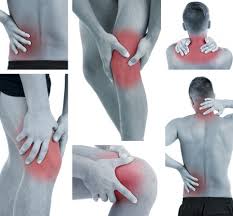The A_D_E model of ergonomics practice. A team approach including physiotherapist to workplace safety.
Is your workplace safe? Have you hurt yourself at work? Is work assembly line designed safely and efficiently? Ergonomics practice with the help of ergonomic consultant can help.
Ergonomists often play a key role in industrial businesses promotion by redesigning workstations to create a healthier, more efficient workplace. However, in situations as complex as assembly lines in large industrial plants with many staff, various tasks, and machines, it is impossible to meet all the demands of both employees and employers and the users by a single ergonomist alone. Regular integration, co-ordination, and co-operation of a team of other professionals are mandatory. Bullock(1990) highlights that “ergonomics is often called a multidisciplinary activity, because of many branches of learning, co-operatively and separately, contribute to the body of knowledge of this discipline”.
Various professionals such as Occupational Health Nurses (OHNs), Occupational Therapists (OTs), Occupational Hygienists, Physiotherapists (PTs), Human Resource staff and design engineers share a vital role in analyzing, designing and evaluating the efficient workplace. It is important because the outcome is efficient and safe for both employee and employer- a win-win situation described by Stein, Soderback, Cutler and Larson (2006).
A-D-E model of ergonomics
When production lines require redesigning, ergonomists commonly use the A-D-E model of ergonomics practice which includes; Analysis Phase- identify current ergonomic problems, task analysis and to provide raw data for changes and improvement required in a new design; Design Phase- development of new workplace, work environment, new tasks and systems; Evaluation phase- testing the new design efficiency and liability, Martino and Corlett (1998). In each of these phases, ergonomist needs to take help and support from various other work professionals.
Role of occupational health nurses
OHNs asses maintain and promote all kinds of health and safety measures in the workplace. The efficiency of OHNs can enhance the reduction and improvement in health and occupational health hazards, thereby improving work and efficiency. Blizzard (2006, as cited in Naumanen & Paula, 2007) focus the impact of OHNs in finalizing the workplace health promotion programs to the employees.
OHNs also play a strong role in conducting different classes, workshops, and training on various health, work related emotion and stress related issues to the workers. According to Oginiska & Nina (2005), stress management training gives major support to workers to deal with workplace related emotional and occupational stress. “They are in a key role in promoting the health of a single worker and a workplace”(Saaranen et.al;2005; Naumanen, 2006,b as cited in Naumanen et.al.,2007, vol.9. issue 2, p 96-102). OHNs contribute in the analysis of current health and safety problems and provide good guidance to ergonomist in redesigning a new assembly line.
Role of occupational hygienist
The regular expertise analysis and recommendations from the Occupational Hygienist can maintain the safest workplace hygiene.. One of the most common hazardous agents, especially in large industrial plants, is high noise level which can lead to Noise-Induced Hearing Loss(NIHL). Approximately 600 million workers are exposed to occupational noise worldwide, a report by Pouryaghoub, Cholamreza, Mehrdad, Ramin, Mahanmadi & Saben,(2007). Pouryaghoub et.al. emphasize on the determination of noise exposure level according to the standard sound level parameters recommended by Occupational Hygienists.
Assembly lines in industrial plants often require much staff to work long hours doing the same repetitive tasks being exposure to the same environmental state and sometimes continuous exposure to harmful radiations. The consequence of this can be various musculoskeletal disorders, airborne diseases, communicable diseases, and sometimes fatal conditions like cancers and disabilities. To prevent, maintain and save workers from these conditions, ergonomists must analyze the report of occupational hygienist before planning the redesign of work assembly.
Role of occupational therapist
The roles of occupational and physical therapists in the workplace often overlap to each other in many aspects. Both professionals are the backbone in assisting workers with and without disabilities to perform occupations at their maximum level and hence improve production efficiency. However, occupational therapists focus mainly on preventive measures in the workplace and environmental and behavioral adaptations and play a major role in advising in the design of workplace physical infrastructures including equipment used.
Hence their analysis is most important to ergonomist in redesigning and can also contribute a lot in designing a new production line. According to Stein, Soderback, Cutler and Larson (2006), the primary concern of the occupational therapists includes Functional capacity Evaluation of workers, job analysis, assisting in job modifications, work related consultations and education services and work environment modifications.
It is always a wise step that ergonomists study the report of occupational therapists well before making any decisions in redesigning of assembly lines in industrial plants. Occupational therapists should work with ergonomists, physical therapists to prevent work injuries and hence ensuring the quality and uninterrupted production and services. Occupational therapists teach and encourage workers to involve in various physical activities. They may include general warm up, stretching, joint range of motion, mobility and relaxation exercises before, during and after the work. Ergonomist must brief these needs in a new design to the design engineer.
Role of physiotherapist

Physiotherapists on the other hand basically concern with restoring, maintaining and promoting overall fitness and health of the workers (Stein et.al.,2006). Physiotherapists are also largely involved in physical activities for the workers. So, their work may overlap occupational therapists role but they mainly focus on therapeutic activities leading to the rehabilitation, treatment of various occupational injuries, and strengthening exercises.
Many times Physiotherapists also need to concern with the design, location, and environment of the workplace and instruments used, to ensure the proper posture of the body, free mobility and well support to minimize musculoskeletal, postural induced problems and hence reducing occupational injuries, accidents, absenteeism, all leading to improve work efficiency. Physiotherapists hold strong knowledge of anatomy and biomechanics of human body and their implications in physical injuries expertise them to contribute significantly in the physical aspect of ergonomic design and redesign of workstations (Bullock, 1990).
Role of human resource staff
Human resource staff (HRS) are the main building block in the development and the redesigning of the workplace. It completely depends on the skill of HRS to choose the right person for the right person at right time and at the right place. A well-managed engineering of job design, task analysis and work environment provided and maintained by HRS can raise the motivation and dedication level of the employees for the work. Major duties and contribution of HRS in industry include recruitment of new employee according to the need, nature of skills needed and type of work; work analysis; organising duty schedules; management of all kinds of problems that employees are facing; introducing various management approaches; workshops and training to the staffs; ensuring health and safety. All these lead towards the betterment of staff and ultimately towards better work efficiency and efficient production.
Major duties and contribution of HRS in industry include recruitment of new employee according to the need, nature of skills needed and type of work; work analysis; organising duty schedules; management of all kinds of problems that employees are facing; introducing various management approaches; workshops and training to the staffs; ensuring health and safety. All these lead towards the betterment of staff and ultimately towards better work efficiency and efficient production.
A report
A report from Kaila (2008) verifies that accident rates in workplaces in India were reduced by 40% to 75% within 6 months to one year of the implementation of Behaviour Based Safety Programs in the workplace. Wilson and Grey (1986) suggest the use of Participatory Ergonomics and state that “the advantage of participatory ergonomics is to use valuable but often overlooked company resources; the knowledge and insight of employees who may be closer to the problem and more familiar with the situation. It is always desirable to take suggestions from ergonomists about this kind of various programs and HRS always focus on managing all the necessary for the implementation of the same.
Employers mainly in assembly lines in large industrial plants where regular shifts of work are compulsory, HRS should manage the proper time schedule to the best use of people and time and avoid fatigue and occupational injuries and thus avoid the unnecessary and frequent errors in the job. “The likely results of quantitative and/or perceived inequities across shift workers are poor morale and poor personnel retention” (Miller, 2008, P.13-17). Thus, HRS should always act carefully as the personal case manager of each employee to do the best for them and to generate the best from them.
Role of design engineer

It’s always on the hand of design engineer that his skill and creation can make all difference in the design and redesign of a workplace to the maximum suitability and comfort to all the employees, employers, and the users. Design engineers main focus or contribution in the redesign is to fit the workplace, work physical environment and machine to the man to its highest level in order to ensure health and safety but not compromising the productivity. Design engineers should always keep in mind the relation between the comfort and discomfort. Unlike other professionals mentioned above, design engineers only play sole and the strong role in the redesign of the workplace. The design engineer must have a clear idea about how comfort is related to individuals emotional response to the product and implementation of it in the product development process.
It is always good for the design engineers to consult with different professionals but the best approach is to follow the ergonomists advice and comments before making the final decision in redesigning as ergonomist is the only person who has detailed discussion with all other professionals involved and can provide the core information on need of the employees, employers, and the users.
Conclusion
In conclusion, regular analysis, redesign, and evaluation of workplace ensure successive strength and efficiency of the organization. The integrated approach of work organization and ergonomists along with the coordinated involvement of other professional groups is important. Although the redesign of the assembly line in a large industrial plant is a complex process, the ergonomists should primarily get all the things well managed and planned in each phase of A-D-E design cycle. Different work professionals play their certain role in the particular phase of the design cycle but only the ergonomist can create a bridge among the employee, the employer, and the customers and evaluate the final outcome of a new design.


You have censored the comment on the dangers of hip distraction in a previous article, so we have sent your website to our attorneys to protect patients from dangerous joint distraction.